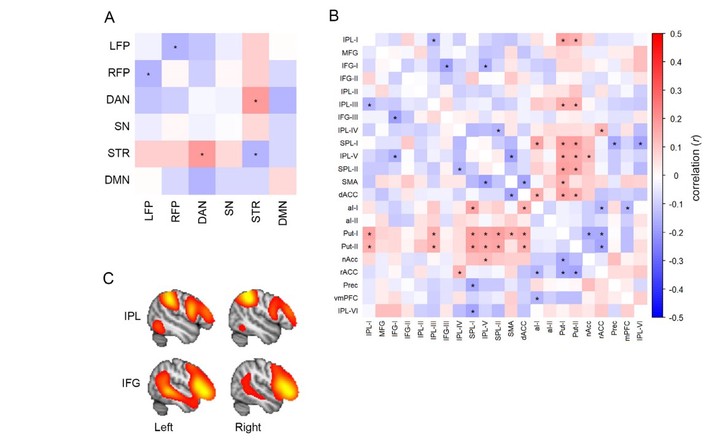Relationships between intrinsic functional connectivity, cognitive control, and reading achievement across development

Abstract
There are vast individual differences in reading achievement between students. Besides structural and functional variability in domain-specific brain regions, these differences may partially be explained by the organization of domain-general functional brain networks. In the current study we used resting-state functional MRI data from the Philadelphia Neurodevelopmental Cohort (PNC; N = 553; ages 8–22) to examine the relation between per- formance on a well-validated reading assessment task, the Wide Range Achievement Word Reading Test (WRAT- Reading) and patterns of functional connectivity. We focused specifically on functional connectivity within and between networks associated with cognitive control, and investigated whether the relationship with academic test performance was mediated by cognitive control abilities. We show that individuals with higher scores on the WRAT-Reading, have stronger lateralization in frontoparietal networks, increased functional connectivity be- tween dorsal striatum and the dorsal attention network, and reduced functional connectivity between dorsal and ventral striatum. The relationship between functional connectivity and reading performance was mediated by cognitive control abilities (i.e., performance on a composite measure of executive function and complex cogni- tion), but not by abilities in other domains, demonstrating the specificity of our findings. Finally, there were no significant interactions with age, suggesting that the observed brain-behavior relationships stay relatively stable over the course of development. Our findings provide important insights into the functional significance of inter- individual variability in the network architecture of the developing brain, showing that functional connectivity in domain-general control networks is relevant to academic achievement in the reading domain.